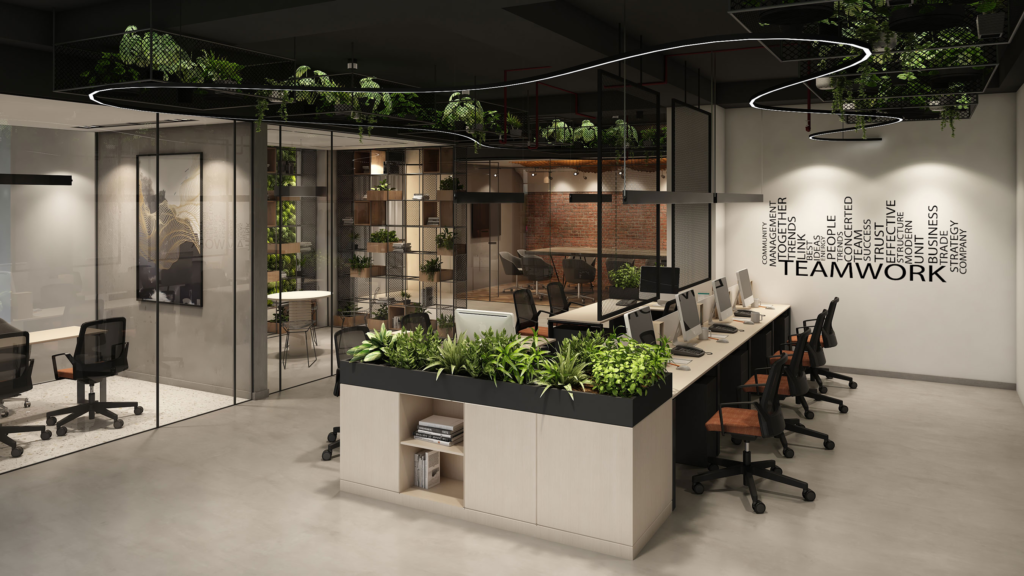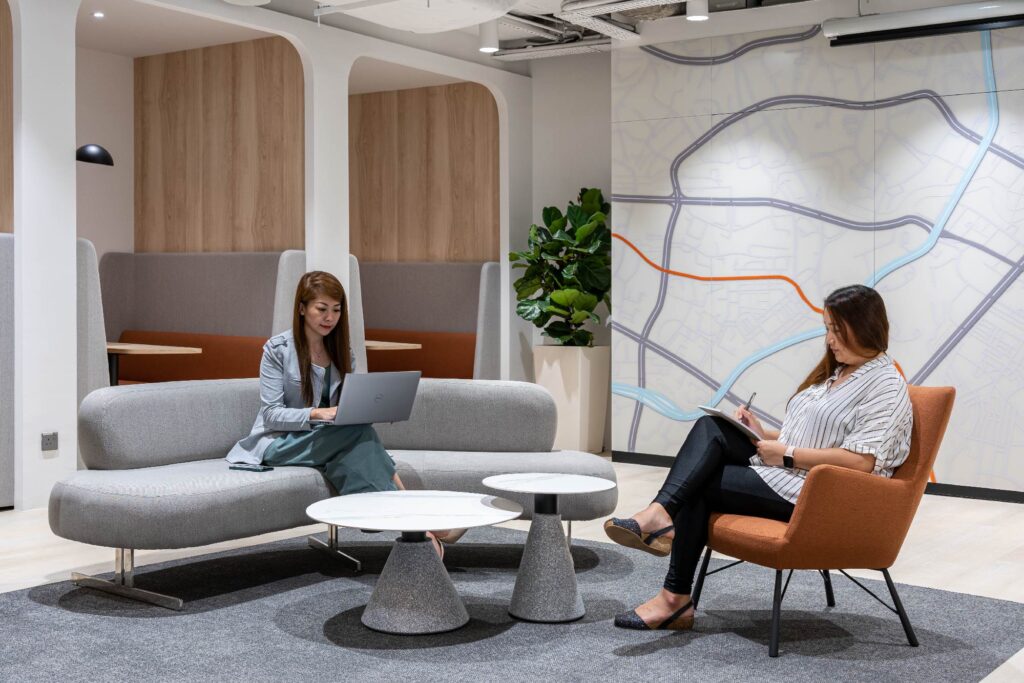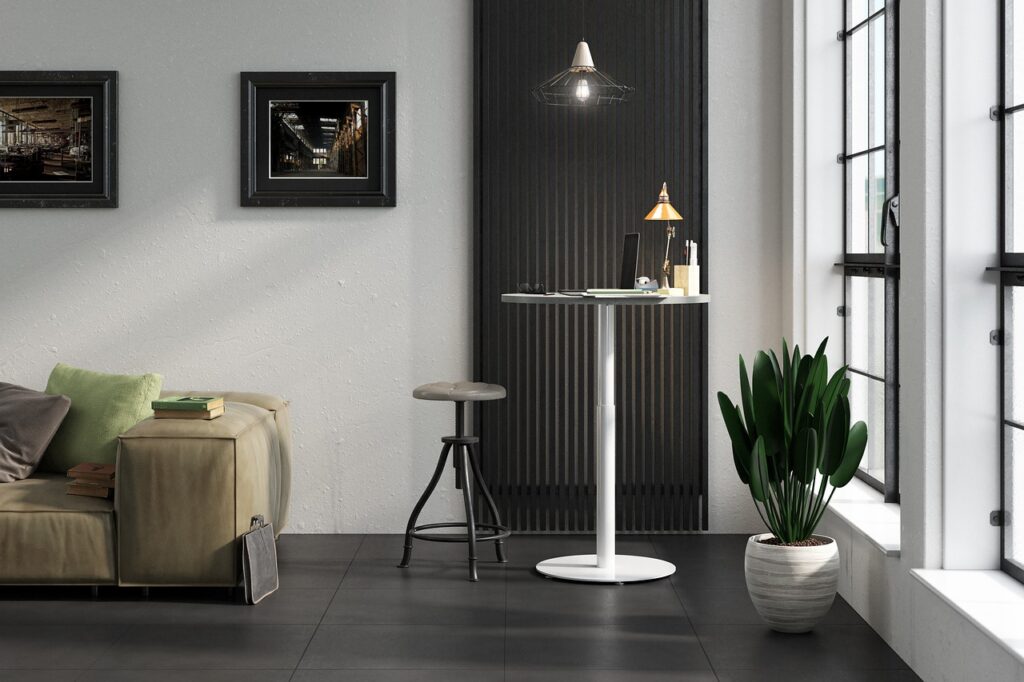In the ever-evolving world of commercial interior design, staying ahead of the curve is crucial. Innovative Office Design Trends are reshaping the way businesses approach their workspaces, focusing on productivity, employee well-being, and sustainability. Let’s explore these trends and understand how they are revolutionizing modern offices.
Understanding Innovative Office Design Trends
Innovative Office Design Trends encompass a range of new practices and ideas aimed at creating more dynamic and efficient work environments. These trends prioritize flexibility, technology integration, and employee-centric designs to enhance the overall workplace experience.
Benefits of Innovative Office Design Trends
- Enhanced Flexibility:
One of the key aspects of Innovative Office Design Trends is the emphasis on flexible workspaces. This includes modular furniture that can be easily reconfigured, creating a versatile environment that adapts to various needs. This flexibility allows for more collaborative spaces, quiet zones, and multipurpose areas. - Improved Employee Well-being:
Modern office designs are increasingly focusing on the well-being of employees. Incorporating elements like natural light, ergonomic furniture, and biophilic design (bringing nature indoors) can significantly boost morale and productivity. These design elements create a more pleasant and healthier work atmosphere. - Sustainable Practices:
Sustainability is at the forefront of Innovative Office Design Trends. Utilizing eco-friendly materials, energy-efficient lighting, and green building practices not only reduces the environmental footprint but also promotes a positive corporate image. Sustainable design practices can lead to long-term cost savings and a healthier workplace.

Key Components of Innovative Office Design Trends
- Open Plan Layouts:
Open plan layouts are a hallmark of Innovative Office Design Trends. These layouts promote collaboration and communication among employees by removing physical barriers. However, it’s essential to balance openness with areas for privacy to cater to different work styles. - Technology Integration:
Seamlessly integrating technology into office design is crucial. Smartboards, video conferencing tools, and high-speed internet are now standard in modern offices. These technologies facilitate efficient communication and collaboration, making work processes smoother. - Activity-Based Workspaces:
Activity-based workspaces are designed to support various activities employees engage in throughout the day. From quiet zones for focused work to collaborative areas for team meetings, these spaces cater to different tasks and enhance productivity. - Wellness Rooms:
Incorporating wellness rooms into office design is a growing trend. These spaces provide employees with a place to relax, meditate, or engage in quiet activities, contributing to their overall well-being. Wellness rooms can help reduce stress and improve mental health. - Sustainable Materials:
Using sustainable materials such as reclaimed wood, recycled metal, and low-VOC (volatile organic compounds) paints supports eco-friendly office designs. These materials are not only better for the environment but also contribute to a healthier indoor air quality.

Practical Applications of Innovative Office Design Trends
- Hybrid Work Models:
The shift towards hybrid work models has influenced Innovative Office Design Trends. Offices are now designed to accommodate both in-office and remote work. This includes creating spaces that support virtual meetings and collaborative work, ensuring all employees feel connected. - Ergonomic Furniture:
Investing in ergonomic furniture is essential for modern office designs. Adjustable desks, ergonomic chairs, and monitor stands help reduce physical strain and improve comfort, leading to increased productivity and employee satisfaction. - Interactive Meeting Spaces:
Meeting spaces equipped with interactive technology such as smartboards and video conferencing tools are becoming standard. These spaces facilitate seamless communication and collaboration, making meetings more productive and engaging. - Green Spaces:
Incorporating green spaces within the office, such as indoor gardens or green walls, is a popular trend. These spaces not only enhance the aesthetic appeal but also improve air quality and create a calming environment. - Color Psychology:
Using color psychology in office design can impact employee mood and productivity. For example, blue hues are known to promote calmness and focus, while yellow can stimulate creativity. Thoughtful use of colors can create a more engaging and effective workspace.

Integrating Innovative Design with Office Interior Design
To successfully implement Innovative Office Design Trends, it’s essential to integrate them seamlessly with overall office interior design. This involves strategic planning and collaboration with design professionals to ensure that the final outcome is both functional and aesthetically pleasing.
For instance, combining flexible workspaces with ergonomic furniture can create a dynamic environment that supports various work styles. Similarly, integrating technology with sustainable design practices ensures that the office is not only efficient but also eco-friendly.
Additionally, the use of biophilic design elements like indoor plants and natural materials can create a more inviting and healthier workplace. These design choices should align with the company’s brand and culture, creating a cohesive and inspiring office space.

Conclusion
Adopting Innovative Office Design Trends is vital for businesses looking to create productive, sustainable, and employee-friendly work environments. By embracing these trends, companies can stay ahead in the competitive landscape and provide their employees with a workspace that supports their well-being and enhances their performance.
For more insights on optimizing your office space, explore our latest blog on office interior design, where we delve deeper into creating functional and aesthetically pleasing workspaces.





